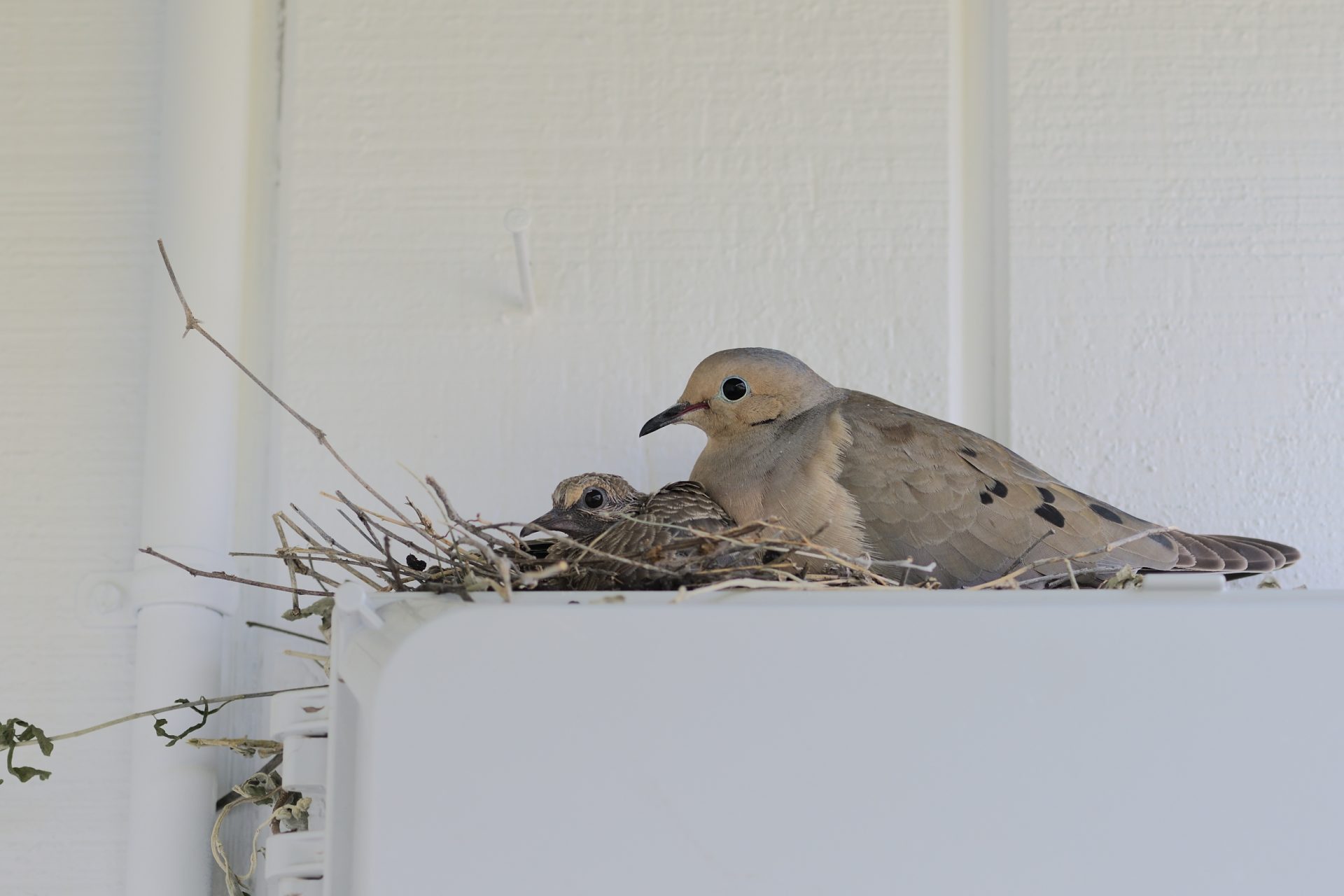Here’s the thing about urban birds: They seize our built environment and use it for their own purposes. Fence tops, utility poles, overhead wires, and electrical equipment, they’re all fair game.
In 2018, I had rooftop solar installed, and I’m pleased to report that my grid-connected 1.7-kilowatt solar electric system generates 150-400 kilowatt-hours a month. The higher figures are from the summer months, when there are more hours of daylight.
Well, the local mourning doves think that my solar installation is terrific.
Since spring 2019, they’ve been nesting atop a toolshed-mounted box that’s part of my solar electric equipment. It’s an Enphase Energy box, and it houses the breaker for the solar array and the Envoy, which is the “brains” of an Enphase Energy system.
Talk about a photo opportunity. I’ve been documenting the solar box nesters since they arrived. The above photo shows my very first dove family.
What I’ve Learned About Bird Photography
I’ll have to admit that learning how to coexist with birds has been a process.
Although I keep a respectful distance from the solar box nesters, I’m certainly not silent. My rule is to be quiet while shooting. But, while I’m reviewing my shots and adjusting the camera settings, I tell the birds what I’m doing. I keep my voice low and I don’t wave my arms. After all, I don’t want to scare any mourning doves off their nest.
I finish each shoot by saying the same thing: “Thank you.” Then I walk away.
On the other hand, I’ve found that the front yard ironwood tree nesters — like the white-winged doves — need more space. So, I get my shots quickly, skip the conversation, and move on to another part of the property. I’ve also found that some birds, like the curve-billed thrashers, are best photographed from inside the house.
Others birds? Let’s just say they flat-out refuse to be photographed.
TIP: Track the book’s progress by subscribing to my monthly email newsletter. Here’s your form:
